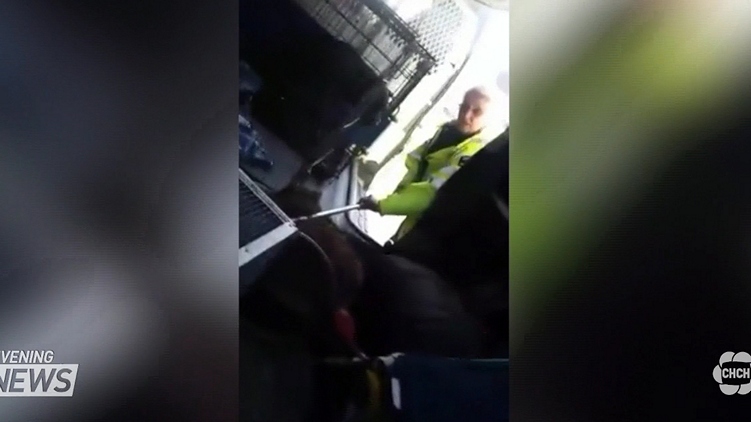
LATEST STORIES:


[projekktor id=’22341′]
The City of Hamilton has the first documented case of “raccoon rabies” in the province in nearly a decade. The rabies virus was discovered after an “agressive” raccoon ended up in a fight with two dogs in the back of an animal control van.
The owner of the two bull mastiffs caught the altercation between the three animals on her phone and uploaded it to her Facebook page. Animal services picked up the two dogs after they broke free from their owner Paula Fancey’s property and put them in the back of the animal control vehicle with the aggressive racoon. There are differing stories as to how the fight started. The city says one of the dogs were first to break free from it’s cage, while Fancey is saying the raccoon was the instigator and broke free first. After testing positive for rabies, the raccoon has since been euthanized. The dog suffered wounds to it’s tongue and mouth and it’s owner is fearful that she might have to put down both her dogs since neither are up to date on their vaccinations.
Rabies is spread from the saliva of an infected animal. humans and animals can get rabies through a bite, scratch, or cut, and contact with the eyes, nose or mouth. If an animal has rabies, signs will begin to appear three to 12 weeks after the infection. Signs and symptoms of rabies in animals include, friendly or tame animals that are usually wild hiding in isolated areas, depression, loss of fear of humans, paralysis, droopings head and sagging jaws.
Other symptoms include extreme excitement and aggression, gnawing and biting their own legs. Attacking objects or other animals and frothing at the mouth. Rabies is usually fatal, unless treatment starts before symptoms appear.
The City of Hamilton says it is “increasingly vigilant” and is urging the public to contact Hamilton Animal Services if they see any distemper in wildlife. According to a spokeswoman, the city is also looking into several issues with the video primarily the strength of the cages in the animal control vans and whether domesticated and wild animals should be transported in the same vehicles